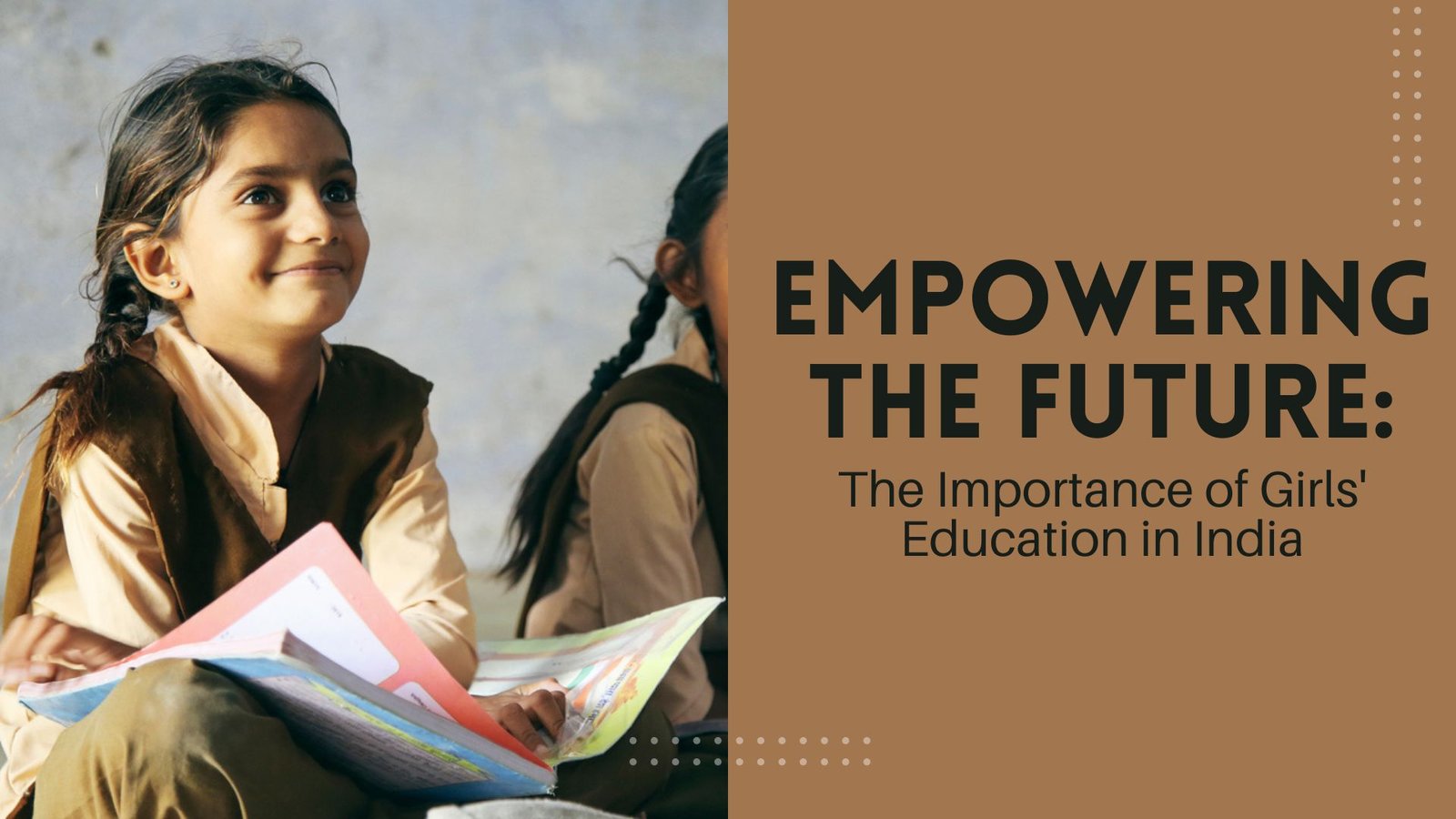Girls’ education is one of the most crucial aspects of building a strong and prosperous nation. In India, educating girls is key to breaking the cycle of poverty, improving health outcomes, and empowering women to contribute meaningfully to society. While significant progress has been made, challenges still exist, especially in rural areas where access to education remains limited. This blog delves into the importance of girls’ education in India, focusing on initiatives like the Girls Education Scheme in India and the growing emphasis on STEM Education for Girls in India.
Why Girls’ Education Matters
Educating girls has a ripple effect that benefits entire communities. When girls are educated, they are more likely to have better job opportunities, marry later, and have healthier children. Moreover, educated women are empowered to make decisions that positively impact their families and communities. Despite these benefits, many girls in India still face barriers to education, including cultural norms, economic constraints, and inadequate infrastructure.
Government Initiatives: Girls Education Scheme in India
The Indian government has launched several initiatives to promote girls’ education and bridge the gender gap in schools. The Girls Education Scheme in India is a cornerstone of these efforts. Notable among these initiatives is the Beti Bachao Beti Padhao (BBBP) scheme. Which was introduced to combat the declining child sex ratio and promote the survival, protection, and education of the girl child.
Another significant program is the Kasturba Gandhi Balika Vidyalaya (KGBV) scheme. This program provides residential schools for girls from marginalized communities.
These schools are located in rural areas. This initiative ensures that girls who are at risk of dropping out have access to quality education.
The program offers a safe environment. This support is crucial for girls facing social and economic pressures.
Addressing the Gender Gap: STEM Education for Girls in India
As the world becomes more technology-driven, STEM Education for Girls in India has gained increasing importance. STEM (Science, Technology, Engineering, and Mathematics) education provides girls with the skills and knowledge they need to pursue careers in these fields. Unfortunately, girls are often underrepresented in STEM due to societal expectations, lack of encouragement, and limited access to resources.
To combat this, programs like Atal Tinkering Labs, established under the Atal Innovation Mission, offer students access to modern technology and encourage creativity and innovation. These labs help cultivate an interest in STEM subjects among girls, providing them with opportunities to explore and excel.
The Department of Science and Technology’s Vigyan Jyoti program is another initiative aimed at increasing girls’ participation in STEM fields. This program offers scholarships, mentoring, and exposure to STEM careers, helping to build confidence and interest in these subjects among girls.
Overcoming Barriers to Girls’ Education
Despite the positive steps taken, several challenges continue to hinder girls’ education in India. Cultural norms that prioritize boys’ education over girls’ remain prevalent in many rural areas. In some cases, girls are expected to help with household chores or marry at a young age, preventing them from pursuing an education.
Economic factors also play a significant role. Families with limited financial resources often prioritize the education of their sons, believing it to be a more secure investment. Additionally, inadequate infrastructure, such as the lack of proper sanitation facilities in schools, can deter girls from attending school, especially during menstruation.
Safety concerns are another major barrier. The fear of harassment or violence during the commute to school can prevent parents from sending their daughters to school, particularly in areas with high crime rates.
The Impact of Technology on Education
The Impact of Technology on Education has been profound, reshaping the way students learn and educators teach. In India, technology is playing a crucial role in improving access to education, especially in rural areas. Digital tools and online resources are making learning more interactive and engaging.
For instance, educational apps and e-learning platforms are complementing traditional teaching methods, offering personalized learning experiences. This technological advancement is particularly beneficial for girls, as it helps overcome barriers such as limited access to physical schools and resources.
Solutions for a Brighter Future
To overcome these challenges, a multi-faceted approach is required. This includes raising awareness about the importance of girls’ education, providing financial incentives to families, and improving school infrastructure.
Community engagement is essential for changing cultural attitudes toward girls’ education. Working with local leaders, parents, and teachers to highlight the benefits of educating girls can help shift societal norms and encourage more families to support their daughters’ education.
Financial support, such as scholarships and conditional cash transfers, can also make a significant impact. By alleviating the economic burden on families, these programs can help ensure that girls do not drop out of school due to financial pressures.
Improving infrastructure, particularly in rural areas, is critical for promoting girls’ education. This includes constructing separate sanitation facilities for girls, offering safe transportation options, and ensuring that schools have the resources needed to provide a quality education.
The Future of Girls’ Education in India
The future of girls’ education in India looks promising, thanks to ongoing efforts by the government, non-governmental organizations, and communities. The emphasis on the Girls Education Scheme in India and the promotion of STEM Education for Girls in India are vital steps in the right direction.
By empowering girls through education, we can unlock their potential and create a more equitable society. The benefits of girls’ education extend far beyond individual success, contributing to the overall development and well-being of the nation.
Conclusion
Girls’ education is crucial for the progress of India. While significant strides have been made, there is still much work to be done. By continuing to support initiatives that promote girls’ education, especially in STEM fields, and addressing the cultural, economic, and infrastructural barriers. We can ensure that every girl in India has the opportunity to learn, grow, and succeed. The education and empowerment of girls are essential for the future of India. And with sustained efforts, we can build a brighter and more equitable future for all.





Your article helped me a lot, is there any more related content? Thanks!
I don’t think the title of your article matches the content lol. Just kidding, mainly because I had some doubts after reading the article.
somatropin hgh kaufen
References:
ajira-hr.com
Thanks for sharing. I read many of your blog posts, cool, your blog is very good.
maximum ipamorelin daily dosage
References:
valley.md